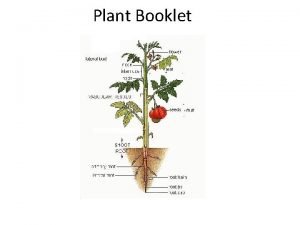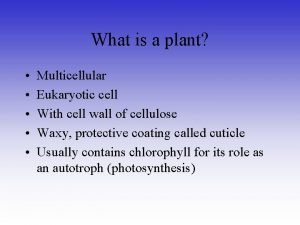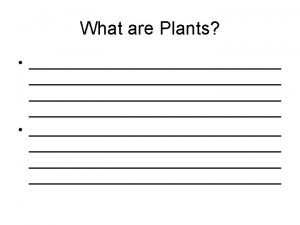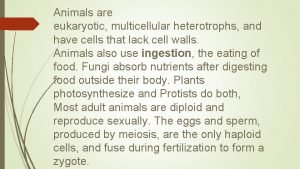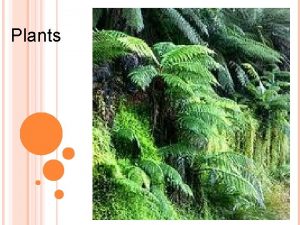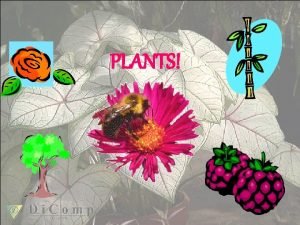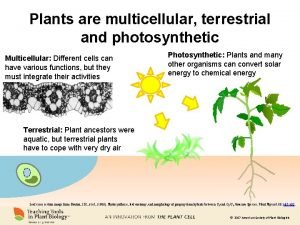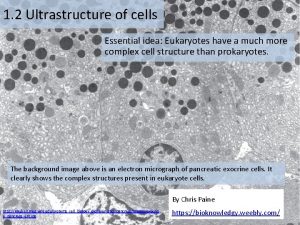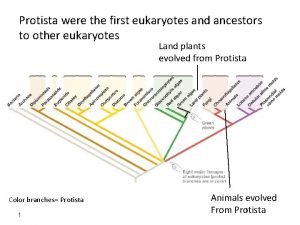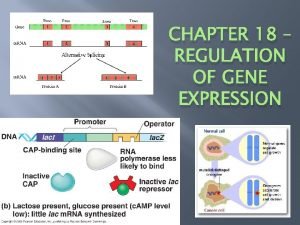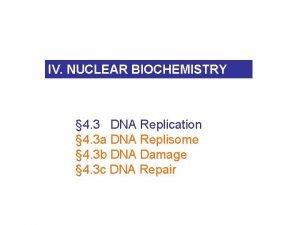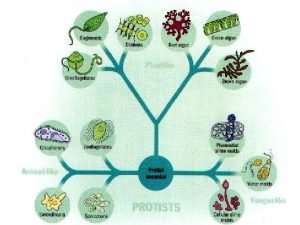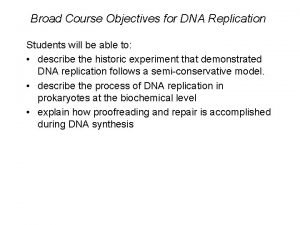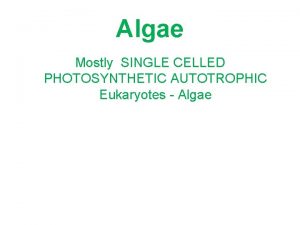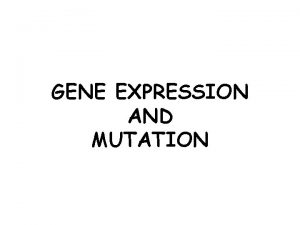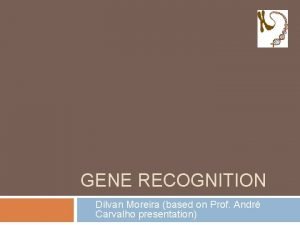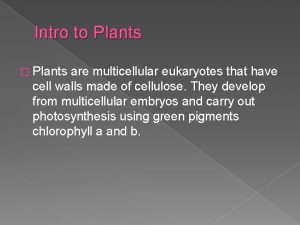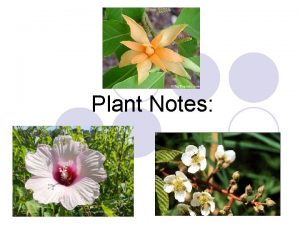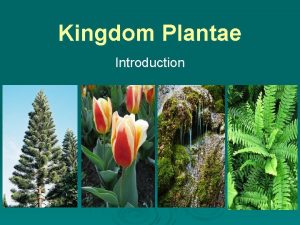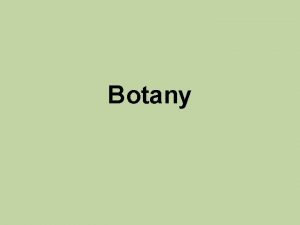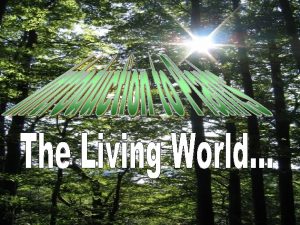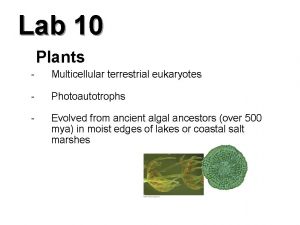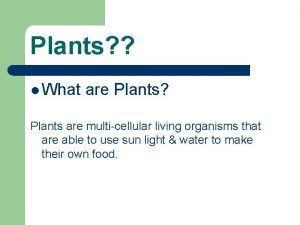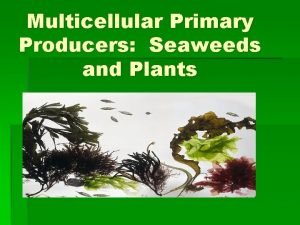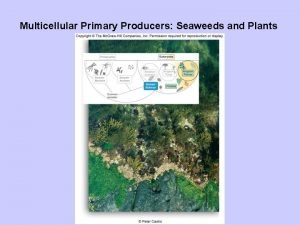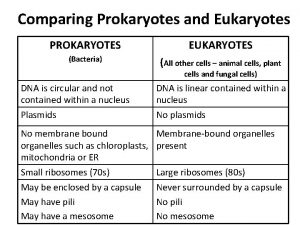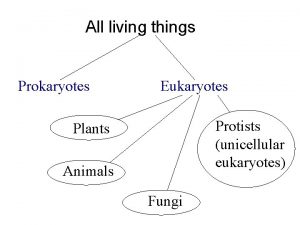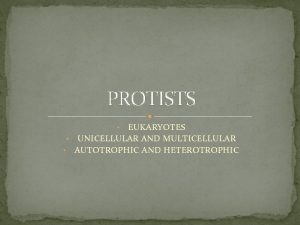What are Plants Plants are multicellular eukaryotes that








































- Slides: 40


What are Plants? • Plants are multicellular eukaryotes that have cell walls made of cellulose • Plants develop from multicellular embryos and carry out photosynthesis using the green pigments chlorophyll a and b

Early Plants • The first plants evolved from an organism similar to the multicellular green algae living today…

Plant Reproduction • Alternation of generations life cycle • Diploid (2 n) sporophyte stage • Haploid (1 n) gametophyte stage • Produce multicellular embryo protected inside multicellular haploid (gametophyte egg sac) tissue copyright cmassengale 4

Plant Reproduction • Diploid (2 n) sporophyte stage produces haploid spores by meiosis • Haploid spores undergo mitosis to produce gametophyte stage Gametophyte makes gametes (eggs and sperm) by mitosis Zygote (2 n) produces the new sporophyte copyright cmassengale 5

Alternation of Generations Gametophyte 2 n Sporophyte→MEIOSIS→ 1 n gametophyte→MITOSIS→ 1 n pollen w/2 sperm OR | FERTILIZATION→ 2 n | seed with plant embryo GERMINATION→ Sporophyte Ovary with 1 n ovules (eggs) 6

Overview of the Plant Kingdom – Plants are divided into groups based on these features: – water-conducting tissues – seeds – flowers – Plants are also classified by other features, including -reproductive structures and -body plan in the alternation of generations, generations in monocots/dicots, ….

Evolution of the Plant Kingdom Flowering plants Cone-bearing plants Ferns and their Mosses and relatives their relatives Flowers; Seeds enclosed in fruit Seeds Water-conducting (vascular) tissue Green algae ancestor

Taxonomy • Plants are divided into two major divisions • Based on the presence or absence of an internal transport system for water and dissolved materials • Called Vascular System Vascular Bundles copyright cmassengale 9

Vascular System • ______ tissue carries water and minerals upward from the roots • Phloem tissue carries _____ made by photosynthesis from the leaves to where they will be stored or used • _____ is the fluid carried inside the xylem or phloem

Vascular System • Xylem tissue carries water and minerals upward from the roots • Phloem tissue carries sugars made by photosynthesis from the leaves to where they will be stored or used • Sap is the fluid carried inside the xylem or phloem copyright cmassengale 11

Bryophytes-the “Non-Vascular” Plants Moss

Groups of Bryophytes 1. Mosses and their relatives are called bryophytes, or nonvascular plants 2. They do not have vascular tissues, tissues or specialized tissues that conduct water and nutrients.

Groups of Bryophytes 3. Bryophytes have life cycles that depend on water for reproduction; the sperm must swim to egg. 4. Bryophytes draw up water by osmosis only a few centimeters above the ground.

Nonvascular Plants 5. Gametophyte. Sporophyte stage is the dominant and conspicuous stage. Gametophyte Stage Moss Gametophytes & copyright cmassengale 15 Sporophytes

Groups of Bryophytes 6. The three groups of bryophytes are: • mosses • liverworts • hornworts

What makes a plant vascular? The presence of vascular tissue, a type of tissue that is of two types-xylem and phloem. Also: • Have a dominant sporophyte generation • The conspicuous plant we know as a fern or a tree is the sporophyte. • Vascular plants have three tissue systems: vascular, ground, and dermal which make up the shoots and roots.

Other tracheophyte traits: • Have a dominant sporophyte generation • The conspicuous plant we know as a fern or a tree is the sporophyte. • Vascular plants have three tissue systems: vascular, ground, and dermal which make up the shoots and roots.

Main Parts of Vascular Plants • Shoots -Found above ground -Have leaves attached - Photosynthetic part of plant • Roots -Found below ground -Absorb water & minerals -Anchor the plant copyright cmassengale 19

Pteryophytes (ferns) • What makes ferns different from other vascular plants? _________________________________ _________________

Pteryophytes (ferns) • What makes ferns different from other vascular plants? • Ferns have one type of spore • The spore grows into a gametophyte which is separate from the sporophyte • The sperm still has to swim to the egg.

Ferns and Their Relatives –Seedless vascular plants include: • club mosses • horsetails • ferns

What are seed plants?

Seed Plants • Seed plants are the most dominant group of photosynthetic organisms on land; they have two types of spores. • Their gametophytes are within the tissues of the sporophyte so they are protected. • Sperm do not have to swim, they are carried in pollen • Seed plants are divided into two groups: • Gymnosperms bear seeds directly on the surfaces of cones • Angiosperms, or flowering plants, plants bear seeds within a layer of tissue that protects the seed


Seeds • A seed is an embryo of a plant that is encased in a protective covering and surrounded by a food supply. • An embryo is an organism in its early stage of development. • The seed coat surrounds and protects the embryo and keeps contents of the seed from drying out.


Gymnosperms—Cone Bearers –Conifers • Conifers are the most common gymnosperms, with more than 500 known species. • Conifers include pines, spruces, firs, cedars, sequoias, redwoods, junipers, and yews.

Gymnosperms— Cone Bearers Ginkgoes • Today the phylum Ginkgophyta contains only one species, species Ginkgo biloba. The living Ginkgo species looks like its fossil ancestors. • Ginkgo trees are planted in U. S. cities because of their resistance to air pollution

Angiosperms— Flowering Plants What are they? _________________

Flowers and Fruits • Flowers and Fruits –Angiosperms develop unique reproductive organs known as flowers

Flowers and Fruits –Flowers are an evolutionary advantage because they attract animals, which then transport pollen from flower to flower. –Flowers contain ovaries, ovaries which surround and protect the seeds. –After pollination, the ovary develops into a fruit –A fruit is a wall of tissue that surrounds a seed. A fruit protects the seed and aids in its dispersal.


Diversity of Angiosperms • Angiosperms are categorized in many ways: – monocots and dicots – woody and herbaceous plants – annuals, biennials, and perennials • An angiosperm can belong to more than one category.

Diversity of Angiosperms


Diversity of Angiosperms Woody and Herbaceous Plants: • Plant stems that are smooth and nonwoody are characteristic of herbaceous plants. • Woody plants include trees, shrubs, and vines

Annuals, Biennials, and Perennials • There are three categories of plant life spans –Annual –Biennial –Perennial • Plant life span is determined by genetic and environmental factors

Diversity of Angiosperms • Annuals are plants that complete a life cycle in one growing season.

Perennials • Perennials live for more than two years.
 Plant tissue
Plant tissue Plants are multicellular eukaryotes
Plants are multicellular eukaryotes Are plants multicellular eukaryotes
Are plants multicellular eukaryotes Plants are multicellular eukaryotes
Plants are multicellular eukaryotes Insidan region jh
Insidan region jh Images of unicellular and multicellular organisms
Images of unicellular and multicellular organisms Multicellular heterotrophs
Multicellular heterotrophs Walmart thất bại ở nhật
Walmart thất bại ở nhật Sau thất bại ở hồ điển triệt
Sau thất bại ở hồ điển triệt Block av độ 1
Block av độ 1 Tìm vết của mặt phẳng
Tìm vết của mặt phẳng Thể thơ truyền thống
Thể thơ truyền thống Con hãy đưa tay khi thấy người vấp ngã
Con hãy đưa tay khi thấy người vấp ngã Thơ thất ngôn tứ tuyệt đường luật
Thơ thất ngôn tứ tuyệt đường luật Gây tê cơ vuông thắt lưng
Gây tê cơ vuông thắt lưng Tôn thất thuyết là ai
Tôn thất thuyết là ai Ngoại tâm thu thất chùm đôi
Ngoại tâm thu thất chùm đôi Plantae method of nutrition
Plantae method of nutrition Are plants multicellular
Are plants multicellular Are plants multicellular
Are plants multicellular Photosynthetic, multicellular, and terrestrial?
Photosynthetic, multicellular, and terrestrial? Eukaryotes main idea
Eukaryotes main idea Is protist a prokaryote or eukaryote
Is protist a prokaryote or eukaryote Eukaryotes vs prokaryotes
Eukaryotes vs prokaryotes The first eukaryotes were
The first eukaryotes were Gene prediction in prokaryotes and eukaryotes
Gene prediction in prokaryotes and eukaryotes Multiple choice questions on prokaryotes and eukaryotes
Multiple choice questions on prokaryotes and eukaryotes Prokaryotic cells vs. eukaryotic cells
Prokaryotic cells vs. eukaryotic cells Prokaryotes vs eukaryotes gene regulation
Prokaryotes vs eukaryotes gene regulation Prokaryotic
Prokaryotic If replicated what will be the complementary strand
If replicated what will be the complementary strand Is protozoa polyphyletic
Is protozoa polyphyletic Linear chromosomes in eukaryotes
Linear chromosomes in eukaryotes Eukarya kingdom characteristics
Eukarya kingdom characteristics Prokaryotic cell
Prokaryotic cell Prokaryotic and eukaryotic cells chart
Prokaryotic and eukaryotic cells chart Spirogyra unicellular or multicellular
Spirogyra unicellular or multicellular What cell type
What cell type Diff between prokaryotes and eukaryotes
Diff between prokaryotes and eukaryotes Rho independent termination
Rho independent termination Polimerase
Polimerase
